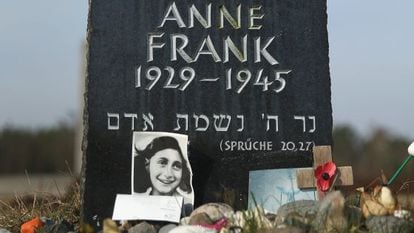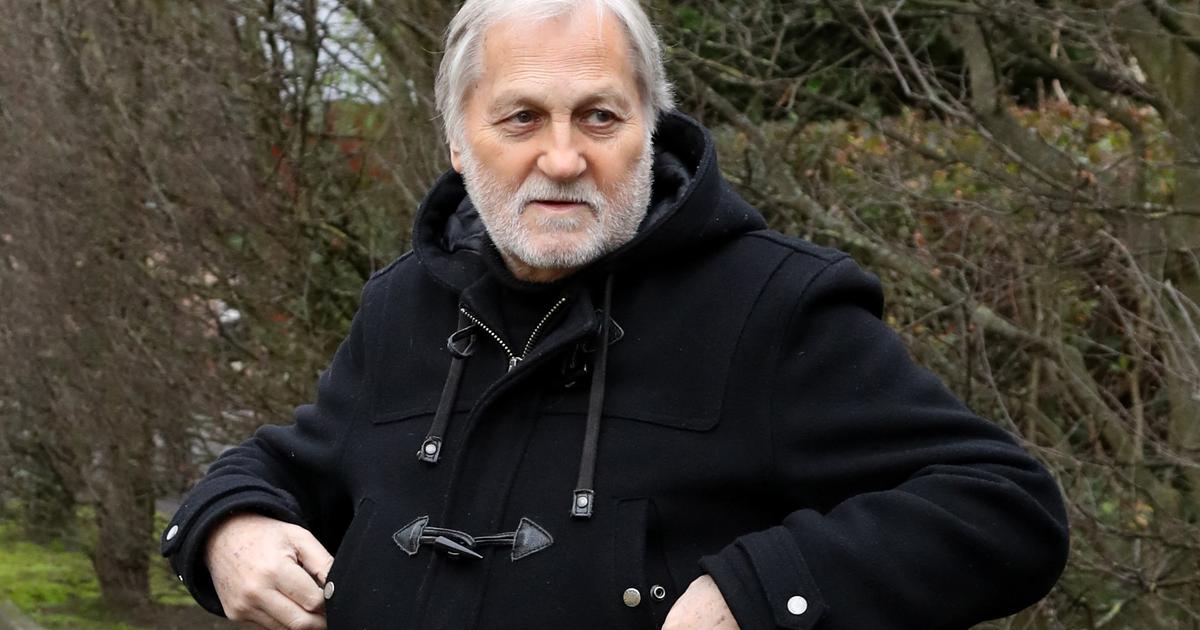Almost 78 years have passed since the Nazis discovered on August 4, 1944 the refuge of Anne Frank, her parents and her sister, and four other people. Hidden in the annex of a house on the canals of Amsterdam, they were deported to the extermination camps and only the father, Otto, returned. Anne and her sister, Margot, perished in 1945 in Bergen-Belsen. The mother, Edith, was murdered in Auschwitz. Until then, their tragic story is similar to that of the nearly 28,000 Dutch Jews who, according to historians, hid in the Netherlands during the German occupation in World War II. About 12,000 of these persecuted were found by the Nazis and suffered a fate similar to that of the Franks and their friends. The
Diary
written by the teenager, however, it has become one of the most recognizable symbols of the Holocaust and her name is synonymous with a cold case.
There are no documents on the search during which they were detained, and at least thirty theories circulate about who could have betrayed them, whether it was a complaint or whether they were found in the course of an operation related to the black market of ration cards.
More information
A new investigation suggests that a Jewish notary betrayed Anne Frank in exchange for saving her family
The book entitled
Who Betrayed Anne Frank?
(HarperCollins, on sale in Spain on February 9), signed by the Canadian writer Rosemary Sullivan, narrates the six years of work of an international investigation that points to a Jewish notary —Arnold van den Bergh— as the possible traitor. His name appears on an anonymous note Otto Frank received after the war, and this studio believes he did it to save his family. The team has had the collaboration of Vince Pankoke, a former FBI agent. The notary was a member of the Jewish Council, an organization that had lists of those in hiding and made them available to the occupying forces. However, these are conclusions that do not convince Dutch historians who are experts in this period.
Otto and Edith Frank immigrated in 1933 to the Netherlands from Germany together with their two daughters, Margot and Ana - aged seven and four, respectively - after Hitler came to power. Once in Amsterdam, they settled in a new neighborhood where other Jewish families lived in the same circumstances. In the Dutch city, Otto Frank ran a branch of Opekta, a European firm that sold fruit pectin to make jam and was based at 263 Prinsengracht. Almost a decade later, the rear annex of this same house served as a hiding place for his family and also for the couple formed by Hermann and Auguste van Pels, and their son, Peter. The dentist Fritz Pfeffer completed the group of eight persecuted who took shelter together in the heart of the city.
Original of Anne Frank's diary, exhibited in the House-Museum of Amsterdam.Anne Frank House
The German Army invaded the Netherlands on May 10, 1940, and Ana's father very soon began to prepare for her possible move to the 50-square-meter annex, which took place two years later. According to Johannes Houwink ten Cate, a specialist in the study of the Holocaust, Otto Frank "spread the word that they had gone to Switzerland and cloistered himself with his whole family in July 1942". "It was an atypical act, because children used to be separated from their parents because that way they had more chances of surviving," he says in a telephone conversation. Jewish minors were moved to places far from their homes based on their appearance. Thus, “a darker boy would go unnoticed in the south, and a blonder boy in the north of the country, and Otto Frank took a risk keeping them all together.Although it is true that they managed to hide two years in a row”, he continues.
On the morning of August 4, 1944, German and Dutch policemen, under the command of Karl Silberbauer, an Austrian SS agent stationed in Amsterdam, discovered the eight pursued. The Anne Frank House, the museum currently open in the same building on Prinsengracht, points out that there are no official documents of the arrest, but both Otto Frank and the five people who helped them hide recognized in 1945 the two Dutch agents of the group in some photos.
In her biography of the father, author Carol Ann Lee suggests that Tonny Ahlers, a member of the Dutch National Socialist Movement (NSB), reported the hiders to the German secret police. According to Houwink ten Cate, on the other hand, "it has not been possible to prove that Ahlers was aware of the annex." “The same thing happens with Lena Hartog, the wife of a company worker. Melissa Müller, Anne Frank's biographer, presents her as a suspect in the accusation, and there is no evidence either, "he says. The same happens with Ans van Dijk, a Jewish woman who revealed the hiding place of many victims after having hidden herself, and was executed as a collaborator in 1948. “It has not been verified either. One thing is the desire to know and quite another to truly know”, maintains the Dutch scholar.He admits the good work of the international team to analyze and discard some thirty of these theories, including the call from a police informant received by Willy Lages, who was the head of the German secret police. But he maintains that they are wrong to single out Arnold van den Bergh.
Monument to Anne and Margot Frank in Bergen-Belsen.sean gallup
The new book focuses on an anonymous note sent to Otto Frank after the war that pointed to the notary as responsible for having revealed the hiding place due to his work in the Jewish Council of Amsterdam. The Nazis compiled a registry of all Dutch Jews, and the researchers assume that Van den Bergh had access to the lists of those in hiding at the Council. "They maintain that he would have given them up to protect his family," says Houwink ten Cate. “It is naive to think that the invader would respect a Jew for passing information, while the Nazis carried out the greatest genocide in history. Although Van den Bergh forged papers to pass himself off as half-Jewish and avoid deportation, when it became known he had to go into hiding with his family. It was February 1944 and Anne Frank was discovered in August of that year.I don't think it was the notary, who died in 1950, but his reputation is already damaged forever. The Jewish Council was heavily criticized after the war for its role as an instrument in the hands of the occupier, but I have never heard that they had lists of hidden Jews.” The problem, he points out, is that the advertising machine has been launched “because Netflix is also behind this; when in reality life during the Nazi occupation of the Netherlands was so complex that it surpasses any fantasy”, he indicates.is that the advertising machine has been launched “because Netflix is also behind this; when in reality life during the Nazi occupation of the Netherlands was so complex that it surpasses any fantasy”, he indicates.is that the advertising machine has been launched “because Netflix is also behind this; when in reality life during the Nazi occupation of the Netherlands was so complex that it surpasses any fantasy”, he indicates.
Another of the clues followed over the years points to a betrayal by Willem van Maaren, a waiter at the Opekta warehouse.
It was investigated after the war without result.
Not forgetting that two people related to the protectors of the Franks were arrested for being involved in the black market.
Otto Frank shows Queen Juliana the family hiding place, during the commemoration of the 50th anniversary of Anne Frank's birth.Bettmann (Bettmann Archive)
For the historian Bart van der Boom, the
Diario
It went on sale in 1947, but Anne Frank's figure has skyrocketed since George Stevens's play and film about her hiding place were released in the 1950s.
“For an American, the story of the Holocaust is that of this girl, but she is no more valuable than other Jews in the same situation as her.
Today it is almost a brand, and it is tempting to present a spectacular conclusion after a new search for possible informers, ”he says over the phone.
And he continues: “After the war, the Jewish Council had a bad reputation, and German war criminals said that its members had been traitors in defending themselves.
Therefore, the accusation against the notary and the Council itself is irresponsible without firm evidence.
It may not even have been a betrayal.
The possibility that someone observed strange movements in the annex from the backyard and called the police is also not ruled out. The historian David Barnouw points out by telephone that eight people stuck in a house for two years could be seen by a neighbor. “In recent decades, more than 20 subjects have been identified as the possible traitor. Because we need a traitor. The new investigation puts their confidence on the authorship of the notary at 85%. For a historian, that is ridiculous,” he says. Barnouw predicts new theories about the tragedy of Anne Frank, and shares this reflection on those in hiding: "Had they not been discovered, would they have survived the winter of hunger in 1944?" It refers to the famine caused by the blockade of food transport imposed by the Nazis to the west of the country,when the south had already been liberated by the allies. It is estimated that there were about 22,000 dead. “There are many things that we may never know in this case,” he insists.


/cloudfront-eu-central-1.images.arcpublishing.com/prisa/7C3LUM4R75AU5MMLTKFXM4GDUA.jpg)


/cloudfront-eu-central-1.images.arcpublishing.com/prisa/4CMOJWD7RNHHPJD5UVCNRMMLYM.jpg)



